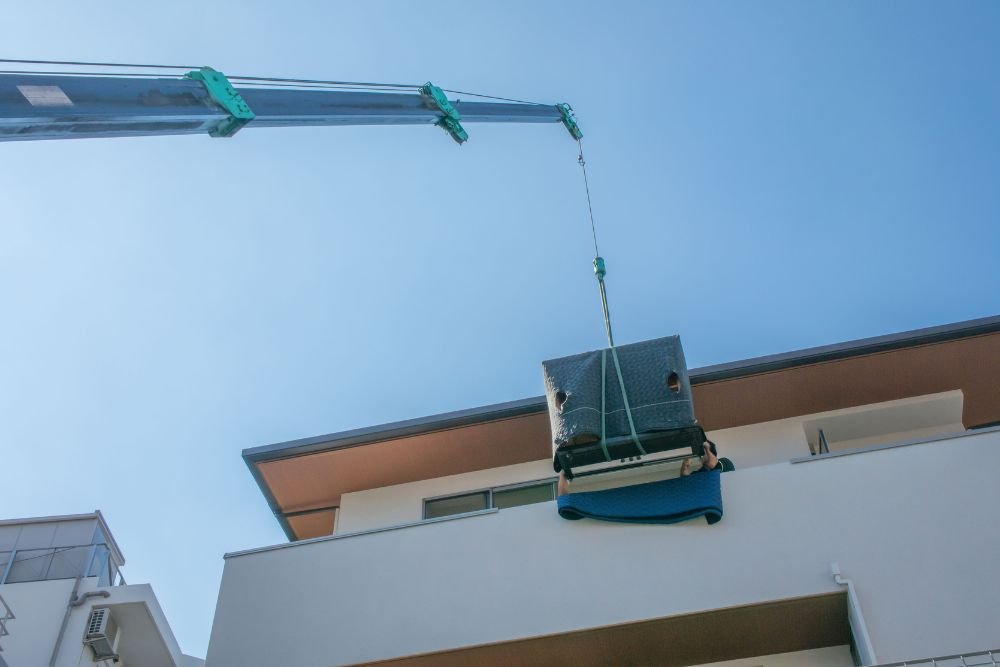
When tackling your next DIY project, it's vital to focus on safety. Rigging gear, often neglected, plays a crucial role in fastening loads and preventing incidents. From strings to pulleys and shackles, understanding how to correctly use this equipment can be the difference between a successful project and a potentially risky situation.
Before you initiate any lifting or shifting operations, take the time to learn yourself with the operation of each rigging component. Survey your gear for damage, and never risk safety by using compromised equipment.
A Beginner's Guide to Rigging Equipment: A Must-Have for Moving Day
When it comes/you're facing/it's time for your next big move/move day/household relocation, ensure/make certain/guarantee you have the right tools/equipment/supplies. Rigging equipment/Moving gear/Lifting tools can significantly simplify/greatly assist/make a world of difference in moving heavy items/transporting bulky furniture/handling your belongings safely. From basic straps/strong ropes/durable lifting bands to pulleys and hooks/lifting systems/mechanical aids, understanding the basics/fundamentals/essentials can transform/revolutionize/streamline your moving process/experience/day. This beginner's guide/resource/overview will equip you/walk you through/help you understand the key pieces/vital components/essential items of rigging equipment and how to use them/their applications/safe handling techniques. Home selling Fort Lauderdale
- Invest in/Consider purchasing/Acquire a quality set/durable collection/range of rigging straps/lifting belts/moving bands
- Learn how to/Familiarize yourself with/Master the use of pulleys and hooks/lifting systems/mechanical advantages
- Prioritize safety by/Always practice/Make sure to
- inspect equipment regularly/check for wear and tear/ensure proper functionality
With the right knowledge and preparation, you can/moving day can become/you'll be able to tackle your move with confidence/handle heavy items safely/make your moving experience less stressful.
Securing Your Loads: Rigging Basics for Home Renovations For tackling home projects
Renovating your house can be a rewarding experience, but it's crucial to prioritize safety. One often overlooked aspect is fastening your loads properly. If you're transporting heavy materials like lumber or drywall, or simply lifting supplies around your work area, using the proper rigging techniques can prevent accidents and damage.
- Start with understanding the weight you're dealing with. This will help select the appropriate rope and gears.
- Check your hardware for any signs of stress before each use. A single frayed rope can lead to a serious incident.
- Bind your loads properly using knots that are known for their strength and reliability, such as the bowline or clove hitch.
- Constantly inspect your setup while working. Modify as needed to maintain a secure connection.
Be aware that safety should always be your top priority. Don't hesitate to seek professional guidance if you're unsure about any aspect of rigging for your home renovation project. A little precaution can go a long way in preventing accidents.
Master the Art of Lifting: Essential Rigging Practices at Home
Whether your undertaking involves a major home renovation, or simply need to transport heavy items, grasping rigging techniques can make all the difference. Safely rigging ensures that loads are handled with accuracy, minimizing the risk of injury and damage to your property.
A well-executed rigging setup involves a few key elements: first, choose the appropriate lifting equipment for the job. This could include hoists, ropes, shackles, and other tools. Next, ensure that all equipment is in excellent condition and rated for the weight you're moving.
Always assess your rigging before use, checking for any signs of wear or damage. Once you have the right equipment, create a secure attachment point for your load using appropriate belts.
Don't forget that safety should always be your top priority. Employ appropriate personal protective equipment (PPE), including gloves, eye protection, and sturdy footwear.
Before you lift anything, coordinate clearly with anyone else involved to avoid accidents. Always raise loads in a controlled manner, avoiding sudden jerks or drops. If you're ever unsure about a particular lifting task, it's always best to consult to a qualified professional.
Essential Tools for the Toolbox: Mastering Basic Rigging
When it comes to rigging, mastery depends heavily on having the suitable tools at your disposal. A well-stocked toolbox can make all the difference between a smooth operation and a frustrating headache. Starting with the essentials, you'll need a sturdy set of cordage in various diameters to suit different applications. A reliable chopper for precise cuts, and a selection of joins to secure your loads are also essential.
- Rounding out this core set, you'll want a versatile wheel system for multiplying force and reducing strain.
- Checking your rigging hardware regularly for wear and tear is critical to well-being
By gathering these fundamental tools and mastering their applications, you'll be well on your way to confidently tackling any rigging project.
Project Central: From Garage to Outdoor Oasis
Whether you're repairing that old tractor or growing a vibrant landscape, having the right tools on hand can make all the impact. A well-organized garage area can become your ultimate basecamp for tackling any home task. From essential hand utensils to specialized power instruments, a well-stocked garage enables you to take on projects big and minor.
- Organize your utensils for easy access.
- Acquire in durable tools that will last.
- Consider a dedicated surface for your projects.